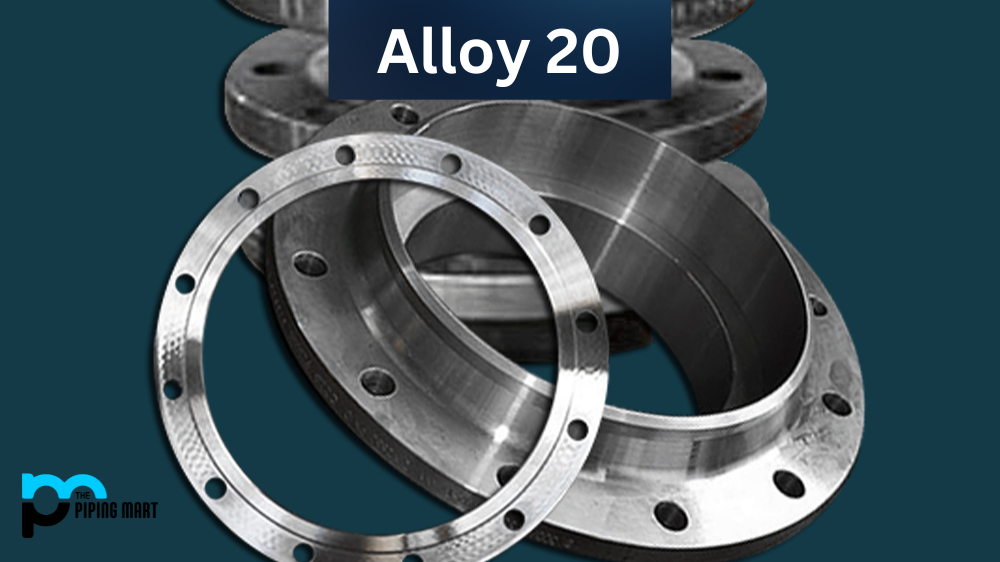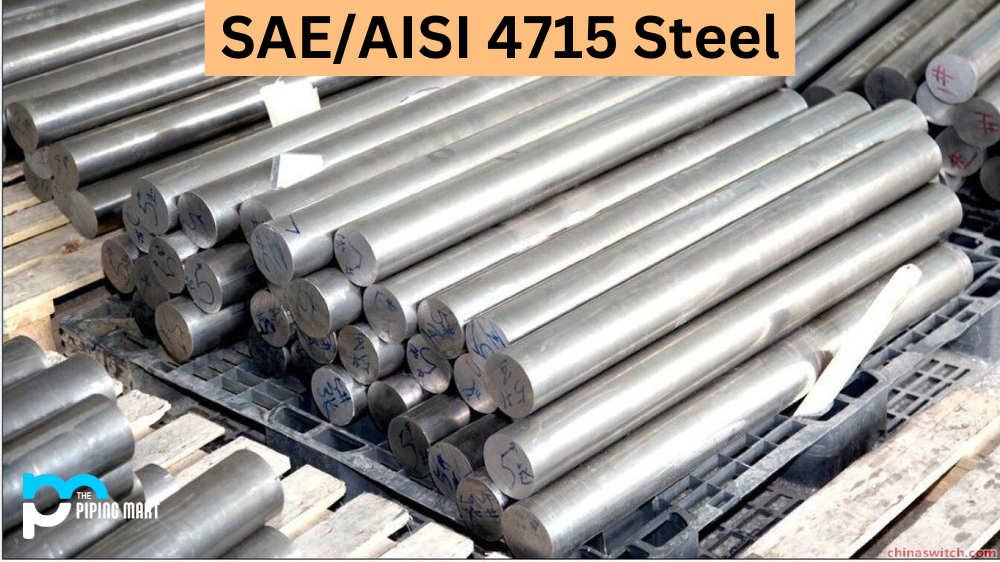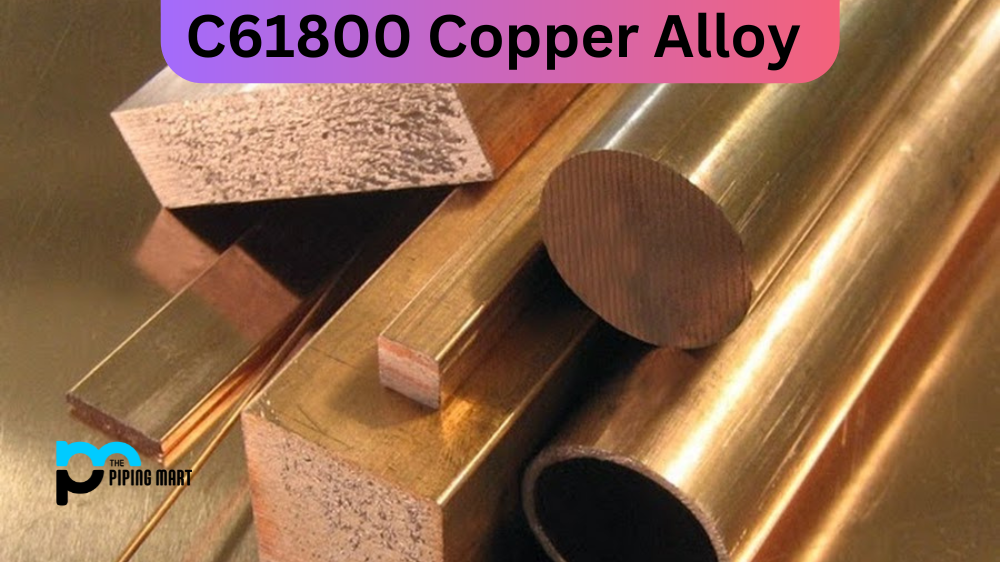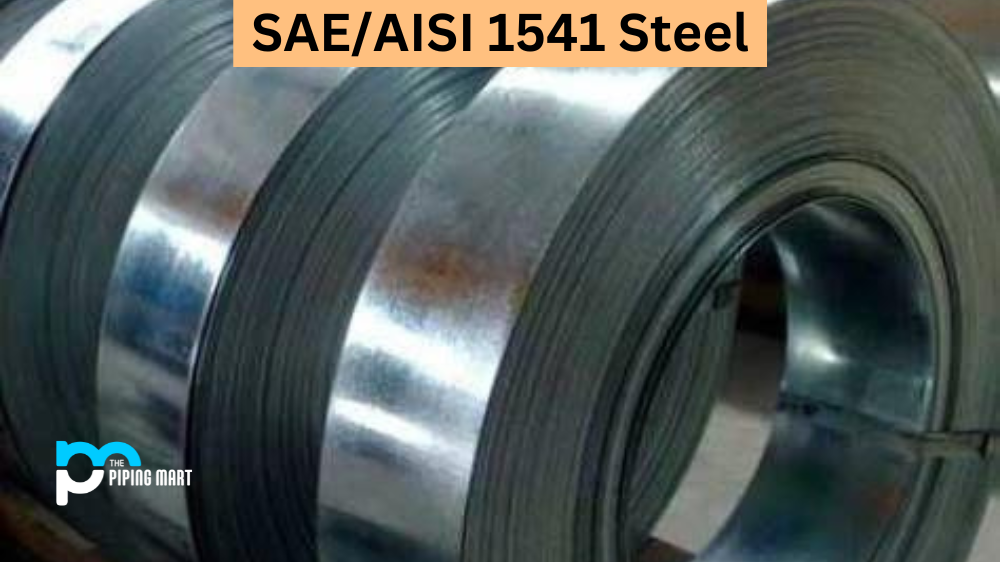Alloy 20, also known as Carpenter 20, is a nickel-chromium-molybdenum stainless steel alloy. This type of steel is austenitic, which means it cannot be hardened through heat treatment. It is corrosion-resistant and has excellent mechanical properties at low and high temperatures. Let’s take a closer look at the composition, mechanical properties, and uses of alloy 20.
What is Alloy 20?
UNS N08020 is a nickel-iron-chromium Alloy 20 highly resistant to corrosion and other harmful elements. It can easily withstand extreme temperature fluctuations, commonly used in machinery and equipment such as tanks and pumps. The alloy possesses excellent strength and toughness qualities, making it a favorite among personnel looking for strong, cost-effective materials. Furthermore, the alloy’s good ductility properties mean it can be formed or manipulated into any required shape. All these noteworthy attributes make Alloy 20 an extremely practical choice when manufacturing products that come into contact with corrosive substances or high temperatures.
What Forms is Alloy 20 Available at Piping Mart?
- Alloy 20 Coil
- Alloy 20 Foil
- Alloy 20 Seamless Pipes
- Alloy 20 Seamless Tubes
- Alloy 20 Bars
- Alloy 20 Sheets Plates
Alloy 20 Chemical Composition
Alloy 20 contains a balanced composition of nickel (30%), chromium (19-22%), molybdenum (2-3%), manganese (1.5%), iron (balance), silicon (.75%), sulfur (.035%) and carbon (.07%). The balance of these elements results in a steel alloy with good strength and excellent corrosion resistance to both acidic and alkaline environments. It has greater resistance to stress corrosion cracking than most other alloys.
| Element | Content (%) |
|---|---|
| Iron, Fe | 35 |
| Nickel, Ni | 32-38 |
| Chromium, Cr | 19-21 |
| Copper, Cu | 3-4 |
| Manganese, Mn | ≤2 |
| Molybdenum, Mo | 2-3 |
| Niobium, Nb | ≤1 |
| Silicon, Si | ≤1 |
| Carbon, C | ≤0.07 |
| Phosphorous, P | ≤0.045 |
| Sulfur, S | ≤0.035 |
Alloy 20 Properties
Alloy 20 is an amazing metal alloy with tantalizing properties and many applications. It is a nickel-iron-chromium stainless steel most commonly used in the chemical, food and pharmaceutical industries. Notable features of Alloy 20 are its acid resistance and excellent formability, making it ideal for various high-temperature uses, including heat exchangers, pressure vessels, condensers and valves. It also contains molybdenum for enhanced corrosion resistance at elevated temperatures. High work hardening ability suits it well-suited for manufacturing components requiring higher yields and stronger tensile strength. In addition to nickel alloy 20 unique combination of mechanical traits, Alloy 20 is highly resistant to stress corrosion cracking and sulfur compounds such as sulfuric acid. For these reasons and more, you can trust that alloy 20 has all the advantageous properties you need for any industrial application.
Carpenter 20 Mechanical Properties
N08020 mechanical properties of alloy 20 include a tensile strength ranging from 80ksi minimum to 145ksi maximum and a 0.2% yield strength ranging from 40ksi minimum to 95ksi maximum. The elongation ranges from 30% to 40% maximum in 2 inches for hot rolled product forms or annealed condition; cold finished product forms may range from 50% minimum to 60% maximum in 2 inches for all conditions.
| Properties | Metric | Imperial |
|---|---|---|
| Tensile strength (annealed) | 620 MPa | 89900 psi |
| Yield strength (annealed) | 300 MPa | 43500 psi |
| Elongation at break (annealed) | 41% | 41% |
Alloy 20 Equivalent
- ASME SB-462 – SB-464
- ASME SB-468
- ASTM B 462 – B 464
- ASTM B 468
- ASTM B 472 – B 474
- ASTM B 751
Alloy 20 Specifications
| Form | ASTM | ASME |
| Alloy 20 Bar | B473 | SB473 |
| Alloy 20 Sheet & Plate | B463 | SB463 |
| Alloy 20 Seamless Pipe & Tube | B729 | SB729 |
| Alloy 20 Welded Pipe | B464, B4741 | SB464, SB474 |
| Alloy 20 Welded Tube | B468 | SB468 |
Alloy 20 Uses
UNS N08020 Alloy 20 finds use in many industries, including pharmaceuticals, chemical processing, power generation, pulp & paper production, food processing, oil & gas exploration & production, waste treatment systems, and nuclear fuel reprocessing plants due to its excellent corrosion resistance qualities combined with good mechanical strength over a wide temperature range. It can be used for many applications such as pumps, valves & fittings, pickling equipment, fasteners, flanges, heat exchangers, pressure vessels, tanks, piping systems & components, nuclear fuel element spacers; condensers & evaporators; piping systems components & supports; centrifuges & agitators; hydrocracking reaction vessels/towers/piping systems; trays & baskets for handling corrosive materials.
- Production of plastics and synthetic fibers
- Chemical and petroleum processing equipment
- Mixing tanks
- Heat exchangers
- Process piping
Alloy 20 Corrosion Resistance
N08020 Material is an iron-base austenitic stainless alloy with superior corrosion resistance in various media such as acids, alkalis, salts, and oxidizing agents. Due to its high chromium, nickel, and molybdenum content, it displays excellent stress corrosion cracking and pitting resistance to chloride stress corrosive environments. Additionally, Alloy 20 contains copper for improved corrosion resistance in sulfuric acid solutions. This makes it ideal for chemical processing equipment like tanks and pipes exposed to harsh or aggressive chemicals such as sulfuric acid.
Carpenter 20 Hardness
Alloy 20 is a highly corrosion-resistant nickel-iron-chromium alloy with excellent general corrosive resistance and improved stress corrosion cracking. Carpenter 20 hardness can reach up to 170 HB (Brinell Hardness), almost twice the strength of 316 stainless steel. It also offers good cold formability and weldability, making it an ideal alloy for many industrial applications.
Alloy 20 Machining
UNS N08020 machining requires special care due to its higher nickel content, making it a difficult metal to work with. When machining this alloy, you must use high feed rates and moderate-to-heavy depths of cuts. Some suggested tools are carbide end mills and inserts with coatings designed for tough materials. Coolant should also be used to extend tool life and reduce heat buildup during the process. Additionally, wear protective equipment such as goggles, respirators, and gloves when operating within any environment where alloy 20 dust may be present.
Conclusion
Alloy 20 is austenitic stainless steel that offers excellent corrosion resistance against acidic and alkaline environments and good mechanical properties over a wide temperature range. It contains a balanced composition of nickel (30%), chromium (19-22%), molybdenum (2-3%), manganese (1.5%), iron (balance), silicon (.75%), sulfur (.035%) and carbon (.07%) which make it ideal for use in many industries such as pharmaceuticals processing, chemical processing, power generation, pulp & paper production, etc., where it can be used for pumps, valves & fittings, pickling equipment, fasteners, flanges, heat exchanger’s, pressure vessels, tanks, piping systems & components, etc. If you are looking for an alloy that offers excellent corrosion resistance while maintaining strong mechanical performance in various demanding industrial environments, then alloy 20 should be your top choice!

Pipingmart is B2B portal specializes in industrial, metal and piping products. Also, share latest information and news related to products, materials and different types grades to help business dealing in this industry.




